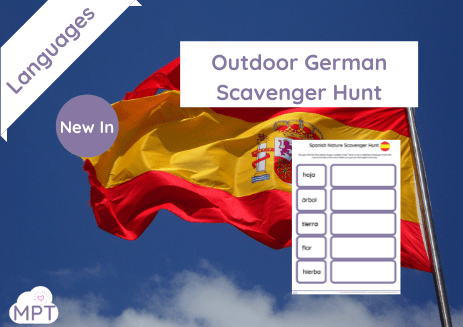Teaching Spanish Outdoors: Engaging Children in Language Learning
Teaching Spanish outdoors can significantly enhance children’s engagement and retention of the language. The natural environment provides a dynamic and stimulating setting for immersive learning experiences. By incorporating outdoor activities into your Spanish lessons, you can make language learning more interactive, fun, and effective. Here are some innovative ideas and benefits of teaching Spanish outdoors, along with practical activities to get children excited about learning a new language.
Benefits of Teaching Spanish Outdoors
1. Enhanced Engagement and Motivation
Outdoor learning environments can boost children’s enthusiasm and motivation to learn Spanish. The fresh air, natural light, and open spaces provide a refreshing change from the traditional classroom setting. External Resource: Edutopia – The Benefits of Outdoor Education Internal Resource: Muddy Puddle Teacher – Outdoor Learning Guides
2. Immersive Language Experiences
Teaching Spanish in a natural setting allows for immersive language experiences. Children can practice vocabulary related to nature, weather, animals, and more in a real-world context. External Resource: Language Immersion Benefits
3. Physical Activity and Learning
Combining physical activity with language learning can enhance cognitive function and memory retention. Activities like scavenger hunts, nature walks, and outdoor games help reinforce Spanish vocabulary and grammar. External Resource: Harvard Health – Exercise and the Brain Internal Resource: Muddy Puddle Teacher – Health Benefits of Outdoor Learning
4. Multi-Sensory Learning
Outdoor activities engage multiple senses, which can improve comprehension and retention of the Spanish language. Children see, hear, touch, and even smell the things they are learning about. External Resource: Multi-Sensory Learning Strategies
5. Real-World Context
Learning Spanish outdoors allows children to see the practical applications of the language. They can describe their surroundings, interact with nature, and use Spanish in meaningful ways. External Resource: Real-World Language Learning
Practical Outdoor Spanish Activities
1. Nature Scavenger Hunt
Activity: Create a list of nature-related items in Spanish (e.g., hojas – leaves, flores – flowers). Children search for these items and use the Spanish words to describe what they find. External Resource: Scavenger Hunt Ideas Internal Resource: Muddy Puddle Teacher – Scavenger Hunt Activities
2. Outdoor Vocabulary Games
Activity: Play games like Simon Says (Simón dice) or Duck Duck Goose (Pato Pato Ganso) in Spanish to reinforce vocabulary and commands. External Resource: Spanish Vocabulary Games
3. Nature Walk and Talk
Activity: Take children on a nature walk and encourage them to describe what they see using Spanish vocabulary. Discuss plants, animals, weather, and landscapes. External Resource: Nature Walk Ideas Internal Resource: Muddy Puddle Teacher – Outdoor Science Experiments
4. Spanish Story Time
Activity: Read Spanish storybooks or tell stories in Spanish while sitting outdoors. Use props and visuals from the natural environment to enhance comprehension. External Resource: Spanish Storybooks for Kids Internal Resource: Muddy Puddle Teacher – Storytelling Techniques
5. Outdoor Art Projects
Activity: Have children create art using natural materials and label their creations in Spanish. For example, they can make leaf collages and label each leaf type in Spanish. External Resource: Nature Art Projects Internal Resource: Muddy Puddle Teacher – Nature Art Activities
Integrating Spanish into Outdoor Learning
1. Use of Natural Objects
Incorporate natural objects into language lessons. Teach vocabulary related to the natural world by using real-life examples. External Resource: Teaching Spanish with Real Objects
2. Outdoor Science Experiments
Conduct science experiments outdoors and use Spanish to explain the processes and results. This approach combines language learning with scientific inquiry. External Resource: Outdoor Science Activities Internal Resource: Muddy Puddle Teacher – Outdoor Science Resources
3. Weather Reporting
Have children practice their Spanish by reporting on the weather each day. They can describe the temperature, precipitation, and wind conditions in Spanish. External Resource: Weather Vocabulary in Spanish
4. Gardening and Planting
Engage children in gardening activities while teaching them Spanish vocabulary related to plants, gardening tools, and processes. External Resource: Gardening with Kids
5. Outdoor Drama
Perform short plays or skits in Spanish using outdoor settings as the backdrop. This activity encourages speaking and comprehension in a fun and creative way. External Resource: Drama Activities for Language Learning Internal Resource: Muddy Puddle Teacher – Drama and Role Play Ideas
Recommended Resources from Muddy Puddle Teacher
To support outdoor Spanish learning, Muddy Puddle Teacher offers a range of valuable resources:
- Outdoor Learning Guides
- Scavenger Hunt Activities
- Outdoor Science Experiments
- Nature Art Activities
- Drama and Role Play Ideas
Conclusion
Teaching Spanish outdoors is a highly effective way to engage children in language learning. The natural environment provides a stimulating backdrop for immersive, hands-on activities that make learning enjoyable and memorable. By incorporating outdoor Spanish activities, educators can enhance vocabulary acquisition, improve comprehension, and foster a love for the Spanish language. Embrace the outdoors and watch your children thrive as they learn Spanish in a fun, dynamic, and interactive way.


